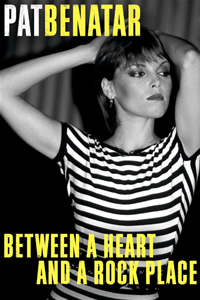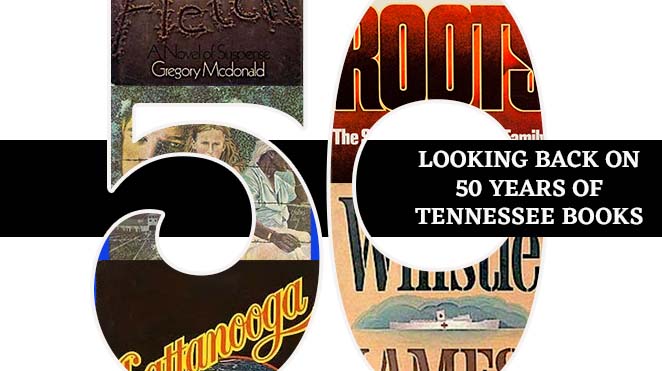Pat Benatar ruled the radio airwaves during the 1980s, and for good reason. Her talent for writing and choosing clever, anthemic, and arena-ready songs (just consider the title of her memoir, Between A Heart And A Rock Place) earned her four Grammy Awards, produced nineteen top-forty singles, and sold more than 22 million records worldwide. Indeed, Benatar’s most memorable tongue-in-cheek, tougher-than-you line may be from “Hit Me With Your Best Shot”: “Before I put another notch in my lipstick case, you better make sure you put me in my place.” Offering “another little piece of my heart” wasn’t in her repertoire.
Benatar practiced the no-frills philosophy and swagger of her contemporaries, Joan Jett and Chrissie Hynde. All three women had one true aim: to be in a rock ‘n roll band. For Benatar, a diminutive, classically trained musician with Pavarotti lungs, the rise to rock stardom seemed unlikely. She succeeded through hard work (she calls herself “a working dog”), “gut instinct,” and a determination to call her own shots—a goal even more unlikely to achieve in the male-driven music business.
Benatar confirms what women musicians have long known and fought fiercely against: “chick singers” are courted by record labels to round out its rosters—only to be dismissed thereafter as “chick singers.” Economics have always played a factor. Unless a member of an all-male band, like Big Brother’s Janis Joplin, Jefferson Airplane’s Grace Slick, Fleetwood Mac’s Christine McVie and Stevie Nicks, female singers rarely had the strong album sales and concert headlining clout as their male counterparts. They weren’t expected to bring in the big bucks. They were expected to follow without question the ironclad rules of the industry.
 Certainly, the 1970s and 80s didn’t lack for successful pop and rock female singers: Carly Simon, Linda Ronstadt, and sister duo Heart were filling concert halls. Their soft, sexually appealing images (think Stevie Nicks, bewitching and whirling, in her velvet and chiffon), made them nonthreatening to record labels and titillating for a largely male rock audience. Pat Benatar, a “self-reliant tomboy” from a working-class Long Island neighborhood, showed up looking like a punk version of Tinker Bell in black spandex pants, a tight fringed shirt, man’s jacket, and ankle boots. Benatar writes that her image was entirely “accidental.” As a joke she had worn her Halloween costume, inspired by the movie Cat-Women of the Moon, on stage at Catch a Rising Star and discovered a “newfound bravado.” The image was born, the audience loved it, and Benatar never strayed from it.
Certainly, the 1970s and 80s didn’t lack for successful pop and rock female singers: Carly Simon, Linda Ronstadt, and sister duo Heart were filling concert halls. Their soft, sexually appealing images (think Stevie Nicks, bewitching and whirling, in her velvet and chiffon), made them nonthreatening to record labels and titillating for a largely male rock audience. Pat Benatar, a “self-reliant tomboy” from a working-class Long Island neighborhood, showed up looking like a punk version of Tinker Bell in black spandex pants, a tight fringed shirt, man’s jacket, and ankle boots. Benatar writes that her image was entirely “accidental.” As a joke she had worn her Halloween costume, inspired by the movie Cat-Women of the Moon, on stage at Catch a Rising Star and discovered a “newfound bravado.” The image was born, the audience loved it, and Benatar never strayed from it.
Still, she had to fight for control and ownership of that image. In Between A Heart And A Rock Place she reveals outrageous examples of deception by her record label, Chrysalis. Once, for a promotional ad and without her approval, Chrysalis airbrushed off her tank top and replaced it with a sign bearing the album’s release date emblazoned across her suddenly size-enhanced breasts. And when Benatar became pregnant with her first child, Chrysalis prohibited any photos or mentions of the baby in interviews because, they said, “mothers aren’t sexy.” Chrysalis also threatened to shelve her Get Nervous album if the cover photo of a de-glamorized Benatar wasn’t reshot.
Despite the acrimonious relationship with Chrysalis, the exhaustive touring, and the sexist program directors and deejays who decided if a record was worthy of play (“I’d walk in and some jerk would pat his lap,” Benatar writes), she never compromised her music. Benatar owes her success in part to finding her musical collaborator and soul mate, guitarist Neil “Spyder” Giraldo, early in her career, and in part to her tough-as-nails work ethic, remarkably grounded ego, and a passion for performing the music she wanted. She refuses to dwell on past victories or “glory days” and she praises the digital technology that enables young women to create, own, and sell music on their own terms.
The Lilith Fair, with which Benatar has often toured since its 1996 inception, provides her with a sense of accomplishment and history. During the 2009 “Call Me Invincible” tour with Blondie’s Deborah Harry, Benatar remembers standing in the shadows offstage, a stage she once dominated, and proudly reveling in the success of the Donnas, a brash, young rock group. “It was,” Benatar writes, “the most natural thing in the world to be four girls, in a rock band, touring America.”
Pat Benatar will discuss Between A Heart And A Rock Place at Davis-Kidd Booksellers in Memphis on July 9 at 12:30 p.m.
Tagged: Nonfiction





